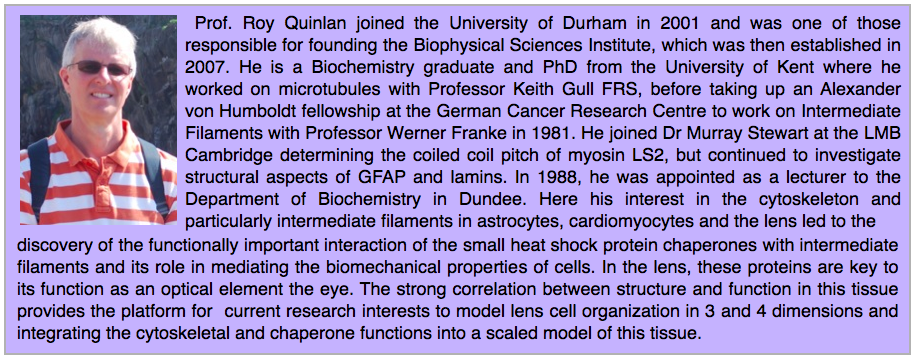
Roy Quinlan (Biology, Durham University, UK)
Abstract: Vision requires the eye lens to dynamically focus light. Millions of individual lens cells are organized as a tissue to perform this function. Eye lenses of different animals appear similar, but their functional requirements differ. In this paper we will re-examine the available data on the 3 dimensional organization of cells that comprise the eye lens in order to understand better how lens structure and cellular organisation sub-serves its function ie chromodynamic focusing of light onto the retina. To understand lens function including how to achieve dynamic focusing (accommodation), we need to understand how cell geometry influences lens shape. We suggest that modern mathematical and computing tools can help achieve this goal using biological data. Current paradigms do not appear to fully take into account the 3D and 4D aspects of the eye lens and so hinder understanding of how the lens functions during accommodation. Previous studies have taken 2 dimensional images using classical histological sectioning and then extrapolating their 3D structure based on the regular hexagonal cross-sectional profile of the lens fibre cells. This led to the popular view that lens cells are arranged like the layers of an onion in concentric shells, which are thought to be the key functional unit for the lens. As the lens changes shape during accommodation, however, this would require the outer shells to compress the inner shells. This doesn't fit the observations and also doesn’t explain why accommodative function decreases with age. Consequently this interpretation of the organizational basis of the lens seriously underestimates the evolutionary development and specialization of animal lenses with respect to its accommodative function. This interpretation also does not account for difference in the 3 dimensional organization from different species that relate to their different accommodative capacities and their change with respect to time ie the 4th dimension. The lens is a tissue where cell geometry is a prominent feature and therefore should be the easiest tissue to mathematically model in 3 and 4 dimensions.
